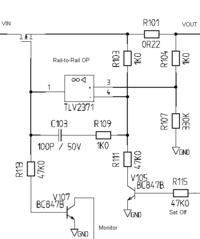xReM1x
Member level 5

- Joined
- Mar 25, 2014
- Messages
- 83
- Helped
- 0
- Reputation
- 0
- Reaction score
- 0
- Trophy points
- 6
- Activity points
- 586
hi.
I'm desiging switch mode power supply using the "LM2576-ADJ",
I need to add a pot to limit the output current. I tried googling it and all I found is using the lm317 and more crap. I need it to be as cheap as possible. so, basically the current limiting schematic should be 3.3V to 30V output, if I put 15V in, the output should be 15V, and that I can adjust the output current, and not the output voltage like most of the schematics I saw. Vin = Vout, Iout = set by potentiometer. Hope I explaind what I need.
thanks.
I'm desiging switch mode power supply using the "LM2576-ADJ",
I need to add a pot to limit the output current. I tried googling it and all I found is using the lm317 and more crap. I need it to be as cheap as possible. so, basically the current limiting schematic should be 3.3V to 30V output, if I put 15V in, the output should be 15V, and that I can adjust the output current, and not the output voltage like most of the schematics I saw. Vin = Vout, Iout = set by potentiometer. Hope I explaind what I need.
thanks.





